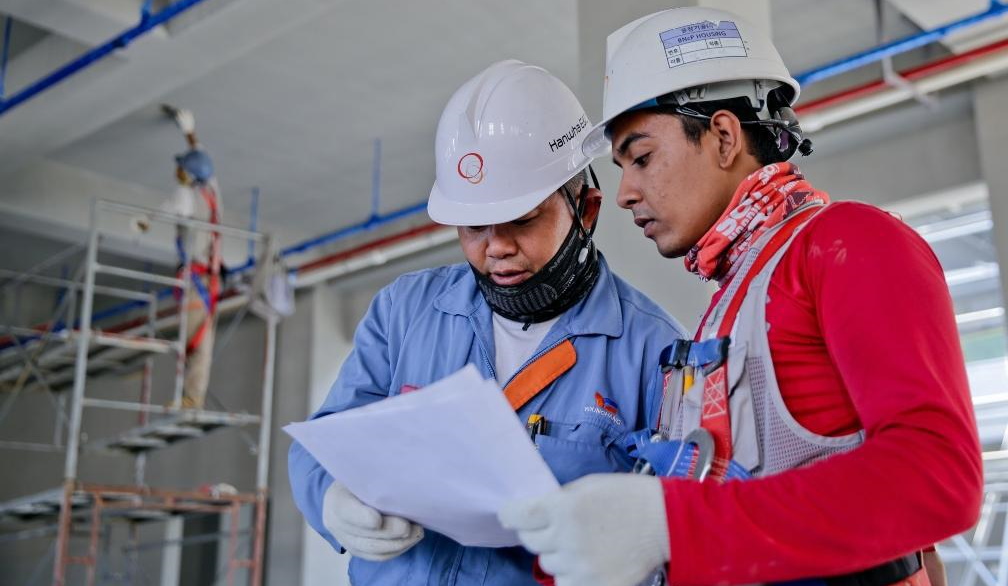Importance of Safety Clothing in the Workplace
- Written by Chloe Taylor

We’ve all seen workers wearing protective gear like hats, gloves, and boots. Do you think you also need to invest in safety clothing for yourself or your employees? If you’re wondering whether PPE is worth it, here’s the exact importance of it that will help you make up your mind in favour of it.
What is safety clothing?
Any garment that is required to be worn by employees at work due to safety concerns is known as a piece of protective workwear. These items are designed specifically to protect from various hazards in hard, liquid, and gas forms and they include airborne particles, chemicals, injuries, accidents, electrical issues, heat, and biohazards. Depending on the job, protective wear changes the look and material. For instance, medical staff needs to wear protective gear but that gear is so much different from what construction workers need to wear. The most common pieces of safety clothing include hard hats, visibility vests, masks, safety goggles, gloves, hard shoes, and harnesses.
Protection from head injuries
A helmet or hard hat is probably the most iconic safety gear item. These protective pieces are designed to protect the wearer’s head from injuries caused mainly by falling objects. People working near exposed electrical conductors that can touch their heads also must wear head protection. A hard heat is usually quite light, and in winter, it’s possible to wear a wool hat or a special liner underneath for added warmth. Everyone entering dangerous zones like construction sites, certain factories and electrical conduction zones should wear a hard hat at all times, visitors included.
Protection for eyes and face
Safety goggles and face masks are also very recognizable and maybe the most widely-used safety gear pieces. They are required for people working in construction, road work, and various factories to prevent fumes, dust, soil, and other elements from entering the eyes and vascular system. According to the law, employees working in such environments should be provided with the proper respirator and spare filters that must be changed at prescribed intervals. Discipline, training, and education should go hand in hand with protective gear because there are certain gases like carbon monoxide which have no smell and taste, yet they are extremely dangerous—only with proper gear and education should people be working with such gases.
Protection for hearing
Loud working environments can be a great hazard to a person’s hearing. Hearing protection is essential for construction sites, but also crucial for factory workers which often report hearing loss due to heavy machines. Hearing issues are very frequent in careers like carpentry, farming, and even dental work, as well as sports—it is recommended for football coaches and judges to wear ear protection such as earplugs or earmuffs. To simplify things, all workers working in environments reaching 80dB (A) daily should consider ear protection. All those working in an environment of 85 or more dB (A) are required to protect their hearing.
Body protection
In many cases, workers need to wear stab proof clothing that will protect them from various bodily injuries. Workwear should be equally comfortable and heavy-duty in order to provide protection, mobility, and heat control in all weather, even in the hot Australian sun. Check out men's workwear in Australia and you’ll find clothing designed for trade, construction, service, and labour workers and meeting all Australian requirements. Mixing durability, protection, comfort, and style, it’s easy to create a safety uniform you like to wear when you have well-designed items.
Protection for feet
Many workers, especially those that handle heavy things or work with heavy machinery and vehicles, need to have the right foot protection. Proper work boots with steel toe boxes are necessary to keep your feet safe from various dropped items, getting run over by machines and vehicles, and stabbed by sharp things. These shoes are usually sturdy in many ways, protecting feet from bumps and hits, as well as from water and cold.
Visibility
Many industries require their workers to stay visible from great distances or in the dark to ensure everyone’s safety. For instance, many security guards and people manning the doors or offering help wear high-visibility vests that allow them to be easily noticed. Also, high-vis jackets are necessary for construction workers and road workers that need to be noticed from afar to be avoided in time. Civilians automatically recognize high-visibility vests and other gear and know how to react to them properly to ensure everyone’s safety.
Contamination safety
Many professionals like medical staff or people working with food are obliged to wear disposable safety gear that will protect them from various contaminants or protect the food and other people from contamination. There are plastic and paper scrubs worn by medical staff, gloves and masks worn by doctors, nurses, cooks, food workers, and servers, as well as hair nets that prevent hair from getting into wounds, food, and drink.
As you can see, protective gear has so many purposes that prevent various types of injuries and diseases and save lives every day. So if you’re working with dangerous materials or in dangerous situations (or managing a workforce in a similar situation) make sure to insist on proper protective gear every day.







